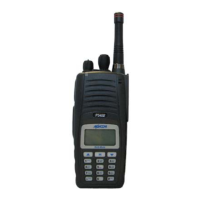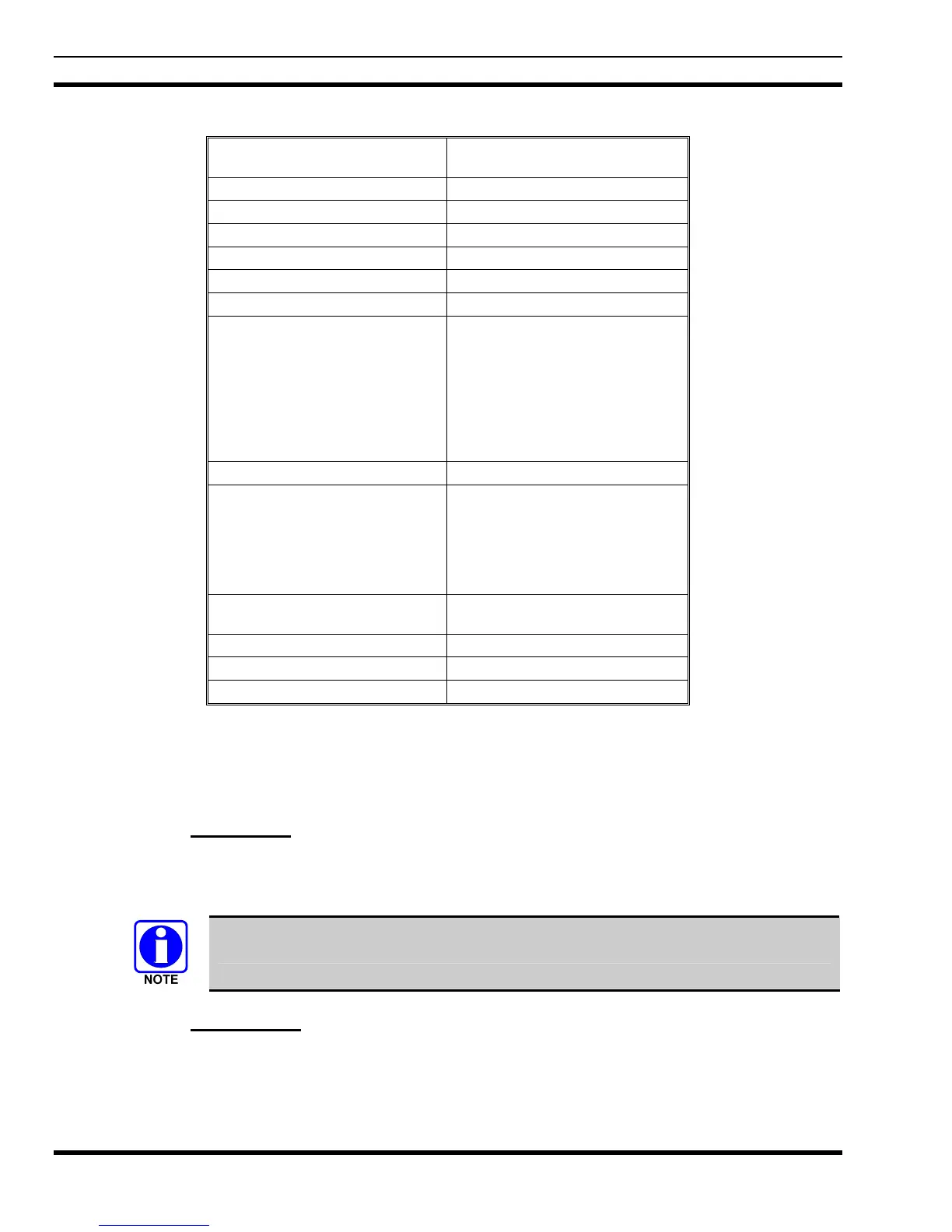MM-012099-001
76
Table 9-4: Information Display
RADIO ID
XXXXXXXX
LID in EDACS/EA. In CONV it has
no meaning.
RAM SIZ RAM Size
FLSH SIZ Flash Size
RF BAND Frequency Band
PERS VER Software Version
DSP DATE Date DSP code was built.
DSP TIME Time DSP code was built.
DSP FEAT
The DSP Features supported by the
DSP code, in Hexadecimal.
Bit mapped (see IPC spec for
details):
• 0x0001 – Conventional
• 0x0002 – EDACS
• 0x0010 – AMPF
• 0x0020 – undefined
DSP VER DSP Software Version
FLSH VER
FLASH Software
ex: P54U0102
P=portable, 53=5300 radio,
U=unencrypted, 01=major revision
(>50 means unreleased code),
02=minor revision
M/A-COM
(C) 2007
Copyright
PERSNLTY Personality Name
BLD DATE Date host (ARM) code was built.
BLD TIME Time host (ARM) code was built.
9.17 DIGITAL VOICE OPERATION
Digital voice programmed systems have two (2) different voice modes: clear (analog) and digital. The
voice modes are programmed on a per-channel basis within each conventional system.
9.17.1 Clear Mode
The Clear Mode is a voice mode in which the radio transmits and receives only clear (analog) voice
signals. These analog signals are non-digitized. Clear mode transmissions can be monitored easily by
unauthorized persons.
Channels programmed for clear operation cannot transmit or receive digital signals.
9.17.2 Digital Mode
The Digital Mode allows the radio to transmit and receive digitized voice signals. Digital signals provide
improved weak signal performance and cannot be easily monitored with a standard receiver. Groups and
channels programmed for digital operation transmit only digital signals. Individual phone calls (I-Calls)
are answered back in the mode in which they were received assuming the call or hang time is still active.

